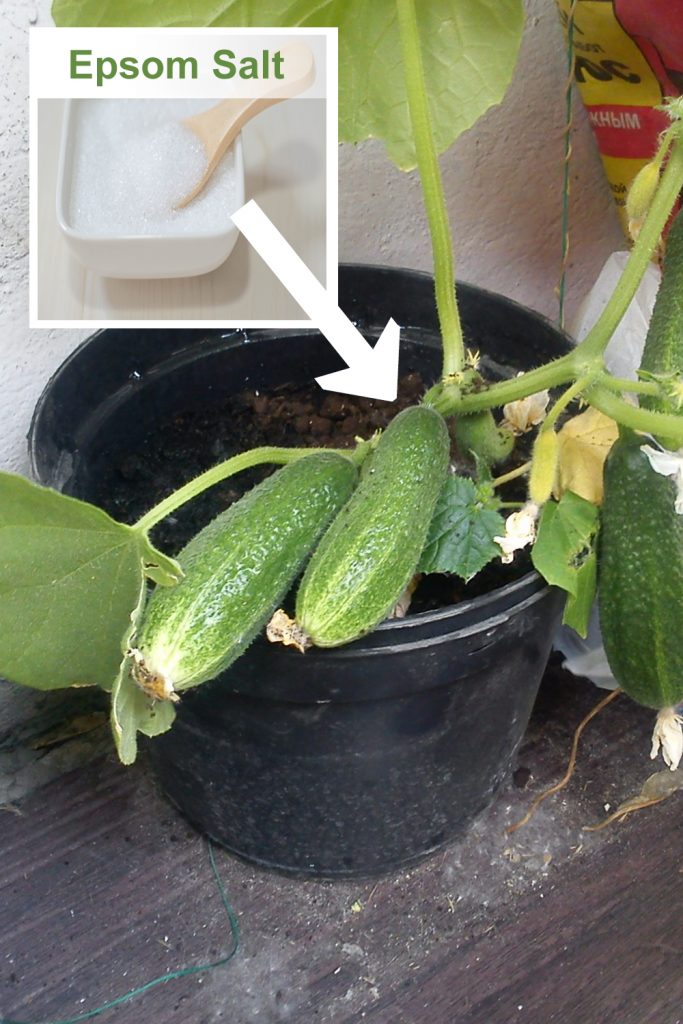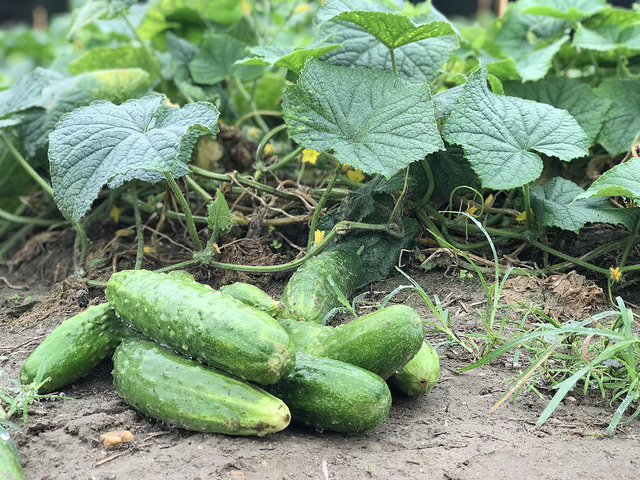Cucumbers are the good snack to munch on when there is nothing else to eat, and you know what they are healthy too. You will find cucumbers in every Indian kitchen, as they are an important part of the Indian salad. The good news is that you can grow cucumbers at your home in containers, in a much smaller area.
Although they have sprawling vines but you can train those vines to climb up a trellis and will no longer need to worry about the shortage to enjoy them the whole summer.
How to Grow Cucumbers at Home?
Cucumber is a refreshing vegetable (although botanically it is considered as a fruit as it grows from a flower and has seeds) and demand proper favorable conditions to get mature rightfully.
In hot urban areas or the places with windy dry climate cucumbers growing in container can dry out quickly if not taken care of. Cucumbers are easy to grow on your porch, open veranda or even at your terrace. They require only three things to grow that are sunlight, soil and the right container.
- Sunlight. Cucumbers need full sunlight to grow at their best that means 6 to 8 hours of sunlight each day.
- Highly fertile soil. Cucumbers require highly fertile soil so when selecting the soil, prefer the proper bag mix which will have the suitable nutrients and minerals that are required for the proper growth of the cucumbers. Refrain from using garden soil as it is heavy and might have weed seedlings and other bacteria as well.
- The container. The most crucial part is selecting the right container. As it might be confusing, to figure out what size of container you should use as to give your cucumbers the free space to grow perfectly.
What Size of a Container You Need to Grow the Cucumbers?

Container you need to use should be large enough to allow the roots of the plant to grow completely undisturbed and produce the best fruit possible. So, what size of pot to use to grow cucumbers? Well, the sizes can range from 12 inches to 24 inches in diameter, depending on how many seeds of the plant are you planting in your pot.
In 12 inches diameter pot you can plant 1 to 2 seeds of the cucumber, whereas you can plant up to 4 seeds of cucumbers in a large 24 inches diameter container.
A large container can be a better fit because it will mean that you will need to water your plant in a comparatively longer time period than the other smaller containers in which you will be watering them quite regularly.
Final step of planting the seeds in the container
- Suitable weather. Planting must be done with keeping in mind the weather conditions. As cucumber is a summer or hot weather plant so, you must not plant it until the springs are over completely.
- Sowing of seeds. You can plant the seeds indoor in a warm and well-lighted area before putting them outside after 6 to 8 weeks.
- How deep to put your seeds. Sow your seeds at least ¼ inches deep in a proper mix of soil containing all the required nutrients and minerals.
- Space for seeds. If you are planting more than one seed then, make sure you are putting your seeds at least 1 meter apart from each other to provide them a proper space to grow out of their vines.
Once your seedlings are up and have 4 to 5 leaves appearing on them, select that seedling without pulling out the other seedling and cut them off at the soil line so that you do not disturb the roots of the other plants. Cucumber plant need 60 to 70 days to get harvested.
Also Read: How Long Does it Take for Kale to Grow?
Harvesting the Cucumber
Harvesting the cucumber is easy, where you just have to select the cucumber and cut the stem right below where the stem is connected to the main vine. It is important to harvest the stem right below the main vine as it keeps the main vine intact so that it can continue to grow more flowers and eventually more fruits and the bigger yields in the season.
Fertilizing Period
At the time of harvesting your plant is at a crucial and unstoppable pace where it is producing flowers eventually fruits and also it is putting on new foliage so it might get a bit hungry.
Plant containers uses a lot of fertilizers even more than a regular plant in a garden because of all the water that runs through it each time you water it. So, it is a must to start fertilizing your plant every 10 to 14 days.
Choose the fertilizers correctly and specifically look out for the ones with a nice balance of Nitrogen, Potassium and Phosphorus, which are usually represented as N, K and P respectively.
Check this out: Why Zucchini Plant Leaves Turning Yellow?
Tips and Tricks
Now you know everything about the cucumbers, the containers to use, the harvesting and the fertilization. So, here are some tips and tricks to keep you on guard with growing your cucumbers perfectly.
- Watering schedule. In the summertime with the hot weather there is a high risk of your plant to completely dry out and die. So, it is better to maintain a watering schedule 1 to 2 inches water per week so as to prevent the plant to dry out and die.
- Feed the plant regularly. Start fertilizing every 10 to 14 days to provide the required minerals and nutrients to the plant.
- Harvesting. Harvest at the optimal size that is the size of 5 to 7 inches long.
Also Read: Why Are My Beets Growing above Ground?
Pests and Disease Control
Any plant can be prone to a bacterial or fungal infection and so, here are few things to keep in mind and to watch for,
- Powdery Mildew. It is a plant disease which causes growth of powder like substance on the surface of plant leaves, shoots and buds. It usually happens in the humid climate conditions and the plants get stressed. Providing good ventilation and air circulation can help prevent the disease. If you spot the disease, try using the homemade remedy by mixing 1 teaspoon baking soda with a drop of dish soap and some water. First by removing the severely affected leaves spray the mixture on the plants directly. It raises the pH level of the leaves which makes them less attractive to spores.
- Cucumber beetles. Cucumber beetles are the beetles that start degrading your plant fruit from the inside giving them a bloated weird outer appearance. The beetles can do damage in any stage of the plant life. With no easy solution to fight these beetles some preventive measures can be taken to control them. The adult beetles feed on the leaves and mature plants while larvae feed on underground roots and stem. They can cause irreversible damages.
Here given are some techniques to use to get rid of cucumber beetles:
- By Handpicking them. One way to get the beetles out of your plants is by handpicking them on the very early stages. You can handpick and collect them in a bucket having soap water to kill them. Make sure to kill the larvae by smashing them right away.
- Vacuuming. By high vacuuming you would be able to suck all the beetles and larvae out of the plant.
- Integrated pest mechanism. It can be helpful in treating the heavy infestation of pollinators. It is completely based on the chemicals and so it can be bad for the bees as well.
- Home remedies. You can spray neem oil on the leaves as well to prevent these beetles to break into the plant. And also, you can cover the new seedlings with garden fabric or covers until they start to bloom.
THE ADVANTAGES OF CONTAINER GARDENING
- Container gardening occupies smaller spaces and adds value to the vacant spaces as well as making the houses and architecture look beautiful.
- They are movable and manageable.
- They are accessible and feasible.
- Managing requirements and taking care of them is very easy.
- There are very less chances of pest damage and management is easy.
THE DISADVANTAGES OF CONTAINER GARDENING
- They require more water even than the usual garden plants or there are higher chances of them to dry out completely.
- Also, there are more frequent requirement of fertilizers to feed them.
- There are limited number of crops which can be grown in the containers.
- Choosing a wrong pot or container can restrict plant growth and hence not give the productive results.
Vegetables to grow in containers
Although there are limited numbers of plants that can be grown by the method of container gardening.
Some of the vegetables are chili, lettuce, pepper, potatoes, reddish, cucumbers, etc. Apples, blackcurrant, gooseberries, raspberries, strawberries are some of the examples of fruits that can be grown by the method of container gardening.
Nutritional benefits of Cucumber
One serving of cucumber does contain about 8 calories. It contains Vitamin K and Vitamin A and are made of 95% of water.
- Cucumber is a good source of water and will keep you refreshed and hydrated.
- It is rich in fiber and helps in avoiding constipation.
- Vitamin k possessing cucumber helps in getting rid of blood clot and keep your bones healthy.
- Vitamin A helps in improving the vision and the immune system. It also regulates and checks the proper working of the heart, lungs and kidneys.
- Cucumbers has many antioxidant properties which helps in repairing the damaged cells.
- It also gives hydration by putting them on your skin and helps in deals with sunburns, swelling and puffy eyes or under eye bags.
With benefits comes risks as well. They are:
- It is better to peel your cucumber’s skin before eating it because it may have grown pesticides on them. So, by peeling the skin off makes it safer to eat. Although you can eat the peel of the cucumber as it is rich in fiber and Vitamin A, but make sure to wash it properly with water.
HOW TO STORE CUCUMBERS?
Usually people wash, peel, slice and toss their cucumbers into a salad.
Storing them in this way in a salad it loses excess amount of water and makes the salad watery and if you want to prevent that, you can soak your cucumbers in the salt water for some time before adding them to your salad. This lowers their water level making them less watery.
You can store cucumbers unpeeled in the refrigerator’s chiller compartment. And look out the ones that do not have the shiny wax coating on them. Use such cucumbers withing 2 days, the shiny ones can be used within a week.
Summary
Summing up all, container gardening is a best technique in todays’ world of adulteration as it gives you completely organic and unadulterated food items.
With all being said about everything cucumbers, we hope you will try out container gardening and get the best out of it with healthy and organic food for you and your family.

